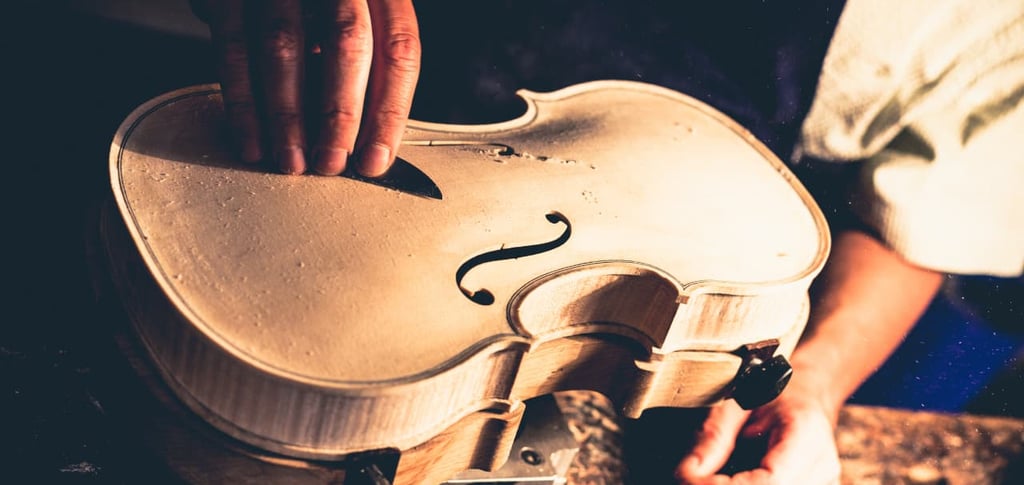Liuteria Tradizionale di Cremona – Strings of Perfection Telehealth
In Cremona, violins aren’t just built — they’re born, hand-carved into perfection so every note carries centuries of passion and craft.
LOCAL STORIES&CULTURELOMBARDIA


In the serene workshops of Cremona, luthiers still carve, shape, and varnish wood with the same attention as their mythic forerunners. This is Cremona's liuteria tradizionale — the art of the handmade string instrument, a tradition which has echoed for generations.
The Story:
Cremona’s reputation as the world capital of violin making began in the 16th and 17th centuries with the great masters: Andrea Amati, Antonio Stradivari, and Giuseppe Guarneri. Their instruments were prized for their perfect balance of tone, beauty, and durability. The craft was — and still is — entirely manual, from selecting seasoned spruce and maple to shaping each curve with precision tools. Every instrument carries the maker’s unique signature, both in sound and in subtle design details, ensuring no two are exactly alike.
Cultural Significance
UNESCO classified Cremona's liuteria in 2012 as one of the intangible cultural heritages that combine art, music, and craftsmanship. It's not a product of industry but of living heritage — an uninterrupted sequence of transmission of the master to the apprentice. To the Cremonese artisans, the violin is not merely an instrument but part of the musician's soul, crafted to endure for generations.
Traces Today:
Cremona still hosts over 150 practicing luthiers, and visitors can see their workshops, usually hidden behind modest doors in the old centre. The Museo del Violino contains exemplars of the work of the Amati, Stradivari, and Guarneri families, and provides practical demonstrations of instrument construction. Once a year, in autumn, the Mondomusica fair draws musicians, collectors, and craftsmen together from all over the globe.
The Cremonese tradizionale liuteria is music before music — the intangible craftsmanship which makes a violin sing. Embedded in each of the hand-carved scrolls and varnish is the old-century guarantee: that beauty, patience, and craftsmanship can sound as well as be seen.
